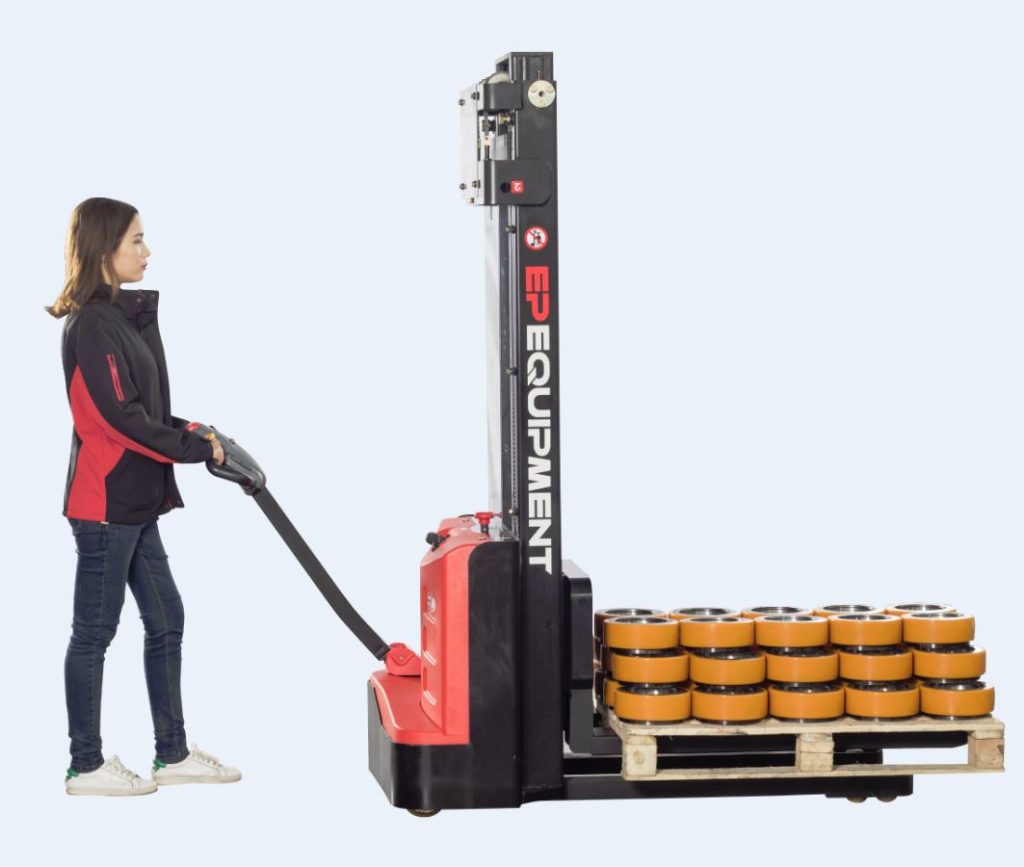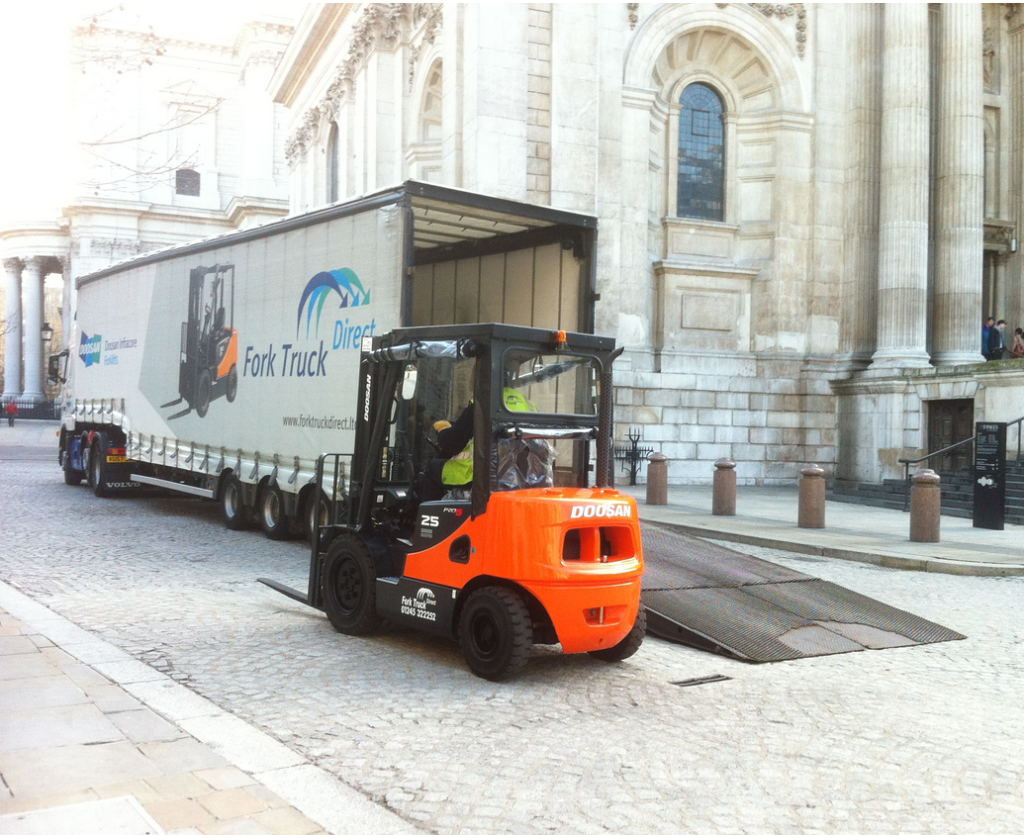Material handling is the movement of goods using warehouse equipment. This is different from logistics, which is the movement of goods over large areas, such as from one country to another. In recent years, online shopping has exploded in popularity, which means companies are investing more and more resources so they can quickly ship goods and fulfil customer orders. Amazon is one of the world leaders in material handling and has invested a lot of money into its warehouse systems to improve service and get goods moving faster. Amazon warehouses are now located across the country, and indeed across the world. The more warehouses Amazon has, the more goods they can store and the faster they can get these out to customers and turn a profit
Amazon’s innovations

ES10-25MM IN ACTION
Amazon has been working hard to improve its material handling systems. The material handling industry is growing as online shipping increases, so Amazon has invested in some innovative systems. They have recently purchased Kiva, which supplies robotic platforms to assist with movements around the warehouse (https://roboticsandautomationnews.com/2017/11/10/material-handling-an-overview-of-a-fast-moving-market/14916/). Kiva has now been rebranded as Amazon Robotics. Robots in Amazon warehouses have increased by a rate of 35,000 a year since 2015 (https://www.thebalancesmb.com/how-amazon-is-changing-supply-chain-management-4155324). At the moment, the robots deliver the goods to humans who do the packing, but Amazon is working on ways to get the robots to do the packing as well as fetching goods.
Drones are now being used as a delivery method in some areas of larger cities like London. Amazon sees drone delivery as the future of the material handling industry. Drones can get goods out to people quickly, safely and efficiently, and don’t require a delivery driver to do so. Amazon is working on making drone delivery safer and more efficient, as there are currently some problems with the wrong customers receiving goods, but this is sure to be sorted in the future.
Amazon has also purchased the upmarket supermarket chain Wholefoods. To go from providing non-perishable goods to perishable goods which must be sent out quickly to customers shows the amount they have invested in efficient services and material handling.
Gold was also struck by enlisting third-party sellers, which make up around 50% of Amazon’s business (https://www.thebalancesmb.com/how-amazon-is-changing-supply-chain-management-4155324). Having 50% of sales come from outsourced companies means that Amazon still turns a profit, taking a fee from all goods sold while not having to use valuable warehouse space to store them.
Delivery is key to Amazon’s success and now uses its own fleet of delivery vehicles along with third-party groups. Having their own vehicles and not having to rely on other companies means Amazon is in full control of delivery, which is important as in some areas it now offers a two-hour delivery window. Goods can go from an Amazon warehouse to the consumer quicker than ever before.
Warehouse location is an extremely important element of their business model. Amazon locates its warehouses close to cities and major transport hubs, so goods can be sent out quickly and efficiently, these warehouses are placed at the outskirts of cities or in smaller towns nearby, which saves Amazon money on expensive rent costs while still being close enough to ship goods out immediately.
How has Amazon impacted the material handling industry and small businesses?
If you own a small business, you may be wondering how you can compete with Amazon. Realistically, you can’t. A business the size of Amazon can get products out faster and cheaper, so to stay in the market you’ll need to offer something different. Amazon can’t do personal service, but you can.
Just because you can’t move goods as quickly as Amazon, doesn’t mean you shouldn’t try. You can copy some of Amazon’s ideas in your factories and warehouses. If you are a new business and are still to purchase warehouse space, try situating it on a site on the edge of a major town like Amazon. Rent will be cheaper and you can ship goods fast.
Make sure you have the right equipment in your warehouse, like a forklift truck. Forklifts are workhorses you can’t do without if you need stock moved quickly, so invest wisely.
Warehouse equipment are on the rise
While Amazon might use robotics and computerised processes in its warehouses, not all companies have the resources to implement these systems. As such, the next best thing is a forklift truck. One of the most important types of machinery in warehouses, they play a key part in material handling.
If you’re wanting your warehouse equipment to work as efficiently as Amazon’s, then you’ll want to invest in the appropriate equipment for the job. There are various forklifts that perform different jobs. A warehouse equipment can generally lift between one and five tons, but you should check the model you’re interested in for exact specifications. Consider how heavy the goods you need shifting are, as if the goods are heavy, then you’ll need a bigger, usually more expensive model, possibly with a bigger battery.
Warehouse trucks fall into several subcategories. A side loader forklift is ideal if the goods you are moving are extremely heavy. This type of truck loads and unloads from the side, making it easy for the operator to drive up to warehouse racks and unload or collect products (perfect when handing long and heavy loads such as timber or steel beams).
A counterbalance forklift would work well if you have a small warehouse and not much room to manoeuvre. These forklifts are good at turning in tight spaces, but in general, cannot carry as much weight as side loaders and are much better suited to lifting standard palletised loads.
A reach truck may also be worth considering depending on the application. If your warehouse is stacked high and is tight on space, then a reach truck would be ideal as these trucks can typically lift way beyond the reach height of a standard counterbalance forklift, whilst still being able to work in tight aisles.
Before choosing which forklift will suit you and your business, there are several other factors which also need to be considered. Your best bet is to get in touch with an experienced material handling expert who should conduct a full site survey to make sure that every aspect of your operation is considered before advising you on the most suitable equipment for your application.
Follow these steps and you’ll be on track to rival Amazon’s efficiency levels.


